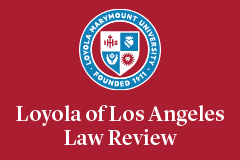Abstract
Race and redistricting each lie at the core of recurring contests over American political identity. It is therefore perhaps no surprise that cases concerning the role of race in redistricting have offered the Supreme Court a steady diet. In 2017, for the fourth time in four decades, the Court struck North Carolina districts based on the legislature’s misuse of race. And the North Carolina legislature, proclaiming the whole business too complicated, simply threw up its hands.
This petulance is likely performance. The law of race and redistricting is resistant to shortcuts and stereotypes, but that does not render it intractable, particularly for those actually drawing the lines. For legislators, confronting race in the redistricting process is most difficult if you’re not actually trying.
This piece traces the law of race and redistricting from the perspective of a redistricting body, distilling the present state of the doctrine to a few core elements. It then places the Supreme Court’s most recent pronouncements within this doctrinal framework, and interrogates the portent of the latest developments as a trail marker of developments to come. As the next redistricting cycle approaches, the most vexing issue is likely not that the Court’s statements on the law are inscrutable, but that some redistricting bodies may not yet be ready to listen. *
Recommended Citation
Justin Levitt, Article, Race, Redistricting, and the Manufactured Conundrum, 50 Loy. L.A. L. Rev. 555 (2017).


